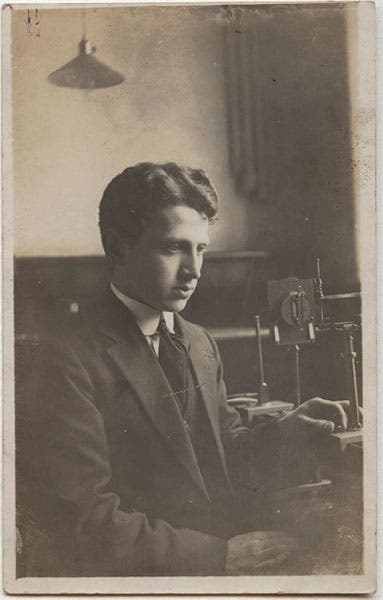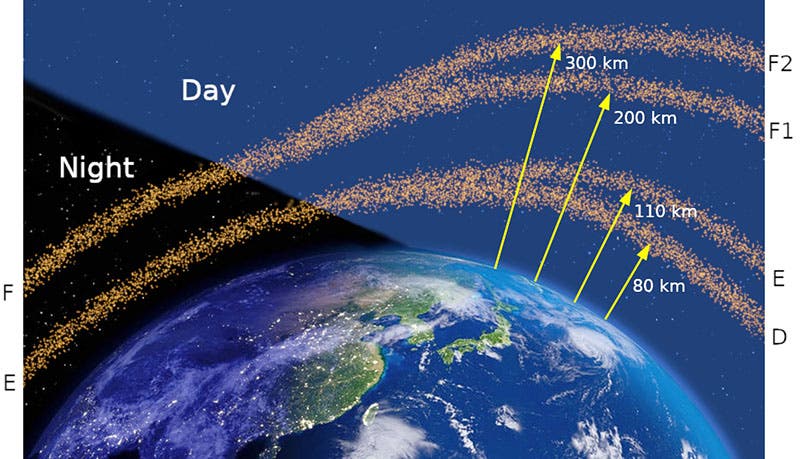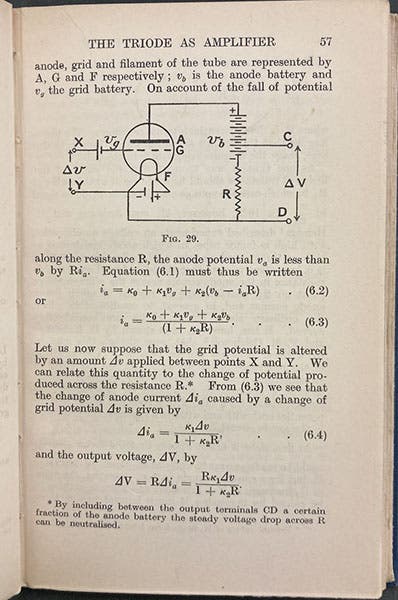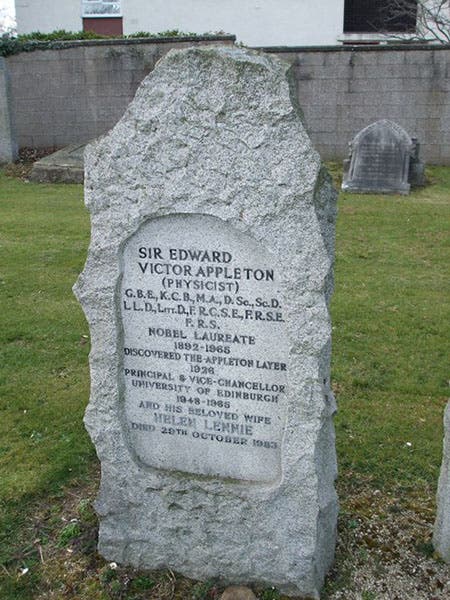Scientist of the Day - Edward Victor Appleton
Edward Victor Appleton, an English physicist, was born Sep 6, 1892, in Bradford, West Riding, Yorkshire. He was a precocious lad, demonstrating interest and ability in science at a young age. He graduated from St. John's College, Cambridge, in 1913, just in time to join the war effort as a Royal Engineer. He returned to Cambridge after the war, and in 1924, he was appointed professor of physics at King's College, London.
During the war, Appleton became interested in radio; in particular, he wanted to learn how thermionic valves (triode vacuum tubes) worked, which were essential for amplification of radio signals, and he wanted to know why radio signals vary in strength when the source is out of line of sight, especially at night.
Two physicists of the previous generation, Oliver Heaviside of England and Arthur Kennelly of the United States, had independently proposed in 1902 the existence of a reflecting layer in the atmosphere that allowed radio wavs to travel beyond the horizon, in an attempt to explain Marconi's transatlantic broadcast of 1901. But they were unable to demonstrate the existence of such a layer. Appleton thought of a way to do so. The BBC (founded in 1922) had a new transmitter in Bournemouth, that they were willing to let Appleton use after the transmitting day ended at midnight. Appleton installed a circuit that would vary the frequency of the carrier wave in such a way that, after it bounced off the hypothetical layer, the ground waves would interfere with the reflected waves and produce interference patterns that could be interpreted and measured, just as had been done with light. It was important that the ground wave and the reflected wave be about the same strength, and Appleton figured that would be the case if he set up his receiver at Oxford, about 100 miles from Bournemouth (on the south coast). He worked with a young graduate student from New Zealand, Miles Barnett, and together they successfully made their measurements and demonstrated the existence of a reflecting layer about 60 miles up. This was first accomplished on Dec. 11, 1924, and announced in several journals, including Nature (third image). The reflecting layer would be named the ionosphere by another young co-worker, Robert Watson-Watt in 1926, the name reflecting the fact that this atmospheric layer is ionized by solar radiation, which gives it its reflective properties.
Appleton's determination of the height of the first ionospheric layer was significant for another reason: it was the first time that radio waves had been used to measure the distance to anything. Using radio waves for such a purpose is now called "radar", and Appleton's measurement of Dec. 11, 1924, is the first example of radar in use. Appleton's young assistant, Watson-Watt, would go on to develop Britain's radar defense system, the Chain Home system, which saved England in the Battle of Britain, as we discussed once in a post on Watson-Watt.
Appleton subsequently discovered that there are multiple reflective layers that make up the ionosphere. The Kennelly-Heaviside layer, the one at 60 miles altitude, is known as the E layer. Appleton discovered a lower layer, the D layer, and an upper layer, the F layer (now divided into two, F1 and F2). The F layer is often referred to as the Appleton layer. A modern diagram shows the relationship of the layers (fourth image).
Appleton had a distinguished career. He moved from King's College to the Cavendish lab at Cambridge in 1936, and then in 1939, he was asked to lead Britain's Department of Scientific and Industrial Research, which he did through the war and until 1949. Then he moved to (of all places, for a Yorkshireman) Edinburgh, where he was Principal and Vice-Chancellor of the University there. And most significantly, perhaps, he was awarded the Nobel Prize in Physics in 1947 for his discovery of the ionosphere. Most of his publications were journal articles, nearly all of which we have in our serials collection, but he published one widely used textbook, Thermionic Vacuum Tubes (1932), which we have in our general collections, and from which we have selected a diagram of a triode amplifier, in case you wondered how a thermionic valve looks in diagrammatic form (fifth image)
Edward Victor Appleton died on Apr. 21, 1965, and is buried in Morningside Cemetery in Edinburgh (sixth image). He has a blue plaque in Bradford, which I am sure no one ever sees except Bradford citizens, and a blue-black one at King’s College that is never photographed; he needs one at Bournemouth, where tourists might actually notice it.
William B. Ashworth, Jr., Consultant for the History of Science, Linda Hall Library and Associate Professor emeritus, Department of History, University of Missouri-Kansas City. Comments or corrections are welcome; please direct to ashworthw@umkc.edu.












